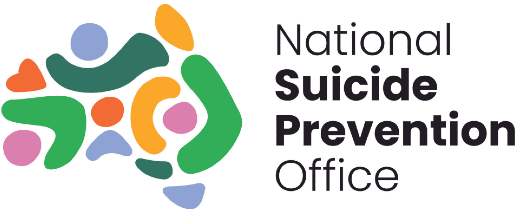The monitoring system increases transparency and access to suicide information so that governments, peak bodies, service providers and communities can have a more informed understanding of suicide and self-harm. This helps improve responses to suicide and helps to prevent and reduce suicide in Australia. The monitoring system frequently publishes new information about suicide risk and protective factors, and regularly updates its existing information with the latest available data.
The National Suicide Prevention Office supports the Australian Institute of Health and Welfare to host a Lived Experience Advisory Group, whose participants share their insights into what the monitoring system delivers.
Introduction
0:04 my name is sam fewings and i am a father
0:07 and i am a husband um and i'm also
0:11 someone with lived experience of suicide
0:13 and suicidal ideation
0:15 i have been involved
0:17 with this project for 12 to 18 months
0:21 as a lived experience advisor
0:23 and on occasion had the uh the privilege
0:26 of
0:27 sharing my thoughts um on
0:31 the development and and how important it
0:33 is um and it's been an absolute
0:35 privilege to do it and i'm very grateful
Who are you
0:37 my name is emily unity and my pronouns
0:40 are she day
0:41 i'm a person of lift experience of
0:43 personal attempts of suicide and
0:45 bereaving family and friends to suicide
0:48 i use my privilege as lived experience
0:50 advisor to ensure that diverse lived
0:52 experiences of suicide are at the heart
0:54 of the system's design and continuous
0:56 improvements some key focus areas for me
0:59 have been ensuring that the system is
1:01 person-centred transparent safe and
1:04 ultimately guaranteeing that nothing is
1:06 done about us without us
What do you think
1:10 um i think anything we can do to try and
1:12 improve
1:13 um suicide monitoring anything we can do
1:16 to try and bust myths by using data
1:20 by looking at the actual facts the
1:22 statistics
1:24 is going to be incredibly helpful um
1:26 i think that uh
1:28 even if it saves one life um
1:31 this whole project has been worth it um
1:34 because as we all know that
1:36 suicide has a ripple effect um and it
1:38 devastates families and it's um it's
1:41 something that we really need to focus
1:42 on so i think it's incredibly important
1:46 deaths by suicide are preventable
1:48 this system can help governments
1:50 services and communities to identify
1:53 emerging trends and priority populations
1:55 affected by suicide
1:57 it is my hope that the system can create
1:59 more opportunities to co-design suicide
2:01 prevention initiatives that are timely
2:03 effective and accessible
Conclusion
2:11 i made a decision a couple of years ago
2:13 to
2:14 do this work full-time i left a
2:16 corporate role
2:18 because
2:19 i felt like
2:21 there was more i could do
2:23 to help
2:24 it is
2:25 absolutely vital
2:27 work that everybody's doing in the
2:31 suicide prevention space
2:33 and anything that we can do to help
2:36 even one person get the right level of
2:38 assistance
2:39 identify where someone might be in
2:41 crisis
2:42 provide opportunities for academics or
2:45 others
2:46 to inform policy um is
2:51 is vital and is uh very close to my
2:53 heart
2:55 um
2:56 as someone who has survived a number of
2:58 suicide attempts um
3:00 and you know as i said i'm a father and
3:03 i'm a i'm a husband and things like that
3:06 [Music]
3:07 you know
3:08 suicide
3:09 i am the face of suicide there is no
3:12 i'm one of the many faces of suicide um
3:15 and so to be able to help another person
3:17 to be able to have someone
3:19 be helped by this system um
3:21 it's it makes me incredibly grateful and
3:23 i'm i'm i'm really
3:25 thankful that i had the opportunity to
3:27 do it i am one of a group of lived
3:29 experience advisors who have lived
3:30 through unfathomable experiences and we
3:33 want to change the narrative for other
3:34 people
3:36 i'm honored and privileged to have had
3:38 the opportunity to co-design the system
3:40 and i will continue to do everything i
3:42 can to help reduce suicide
3:48 you
Expert Advisory Group members
The National Suicide Prevention Office chairs an Expert Advisory Group which meets quarterly and includes representation from people with a lived and living experience of suicide, Commonwealth, state and territory governments, research, and the suicide prevention sector.
- Dr Michael Gardner, Chair, Head, National Suicide Prevention Office
- Mr Alan Woodward, Member, National Suicide Prevention Office Advisory Board Chair
- Dr Grant Sara, Member, National Mental Health and Suicide Prevention Data Governance Forum Co-Chair
- Ms Nieves Murray, Member, CEO, Suicide Prevention Australia
- Ms Nicky Bath, Member, CEO, LGBTIQ+ Health Australia
- Associate Professor Jo Robinson, Member, Head Suicide Prevention Research, Orygen
- Dr Jaelea Skehan OAM, Member, Director Everymind
- Ms Leilani Darwin, Member, Centre of Best Practice for Aboriginal and Torres Strait Islander Suicide Prevention
- TBC, Member, Primary Health Networks
- TBC, Member, Victorian Coroners Court
- Mr Mark Davis, Lived Experience member
- Dr Nerida Volker, Lived Experience member
- Emily Unity, Lived Experience member


